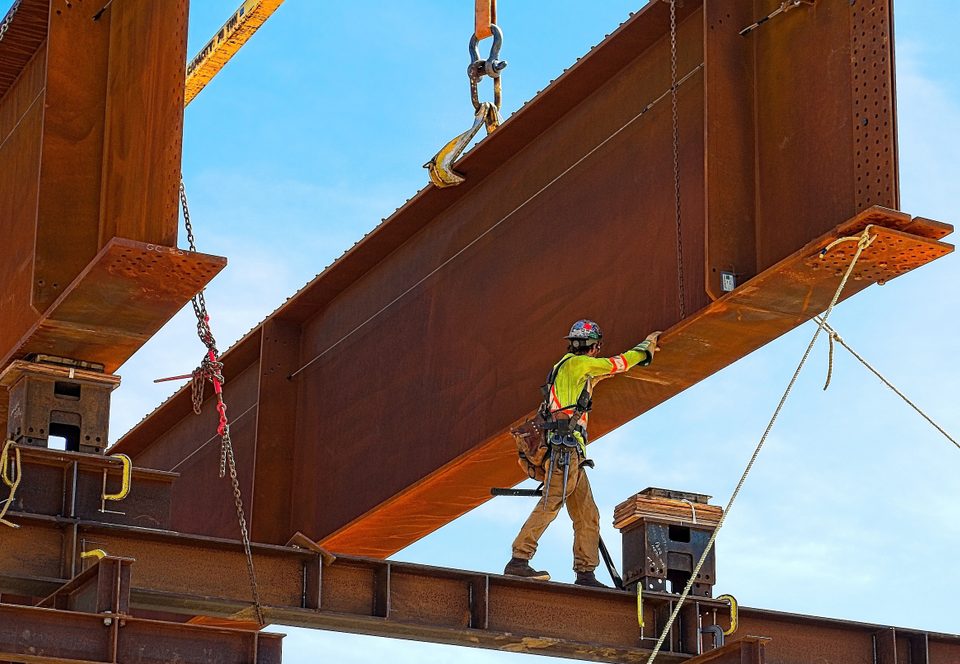Steel and Other Heat-Resistant Metal Qualities

Basics and Common Applications of Steel Beam
March 3, 2023
Broad Basics on the World of Metal Finishing
April 7, 2023There are several major factors that you may be considering for any project that involves metal materials, and heat resistance is often on this list. Whether a project itself is carried out in high heat conditions or it’s expected that the product’s application will involve a need for heat resistance, this is a key area to be focused on – and steel is one of several metals that may be ideal here.
At Wasatch Steel, we’re happy to discuss heat resistance and various other qualities of any of our steel sheet, steel plate, steel bar or other steel products for clients around Salt Lake City and other parts of Utah. What are the qualities that make a metal or metal alloy heat resistant, what are some of the other qualities you may have to “trade off” to get ideal heat resistance, and which metals join steel as highly effective within this area? Let’s have a look.
Why Does Heat Resistance Matter?
Firstly, before we get into the specifics of heat resistance, it’s important to remember why this trait is even necessary. In most cases, it’s because the application of a product could require withstanding temperatures that would otherwise be too high for normal use.
For example, a steel-made product used in the automotive industry or other related industries, may be exposed to temperatures of up to 1000°F. To survive those conditions and still operate as required, you’d need adequate heat resistance.
In other cases, the application may require that a product is as resistant to heat as possible, such as when using steel to make foodservice equipment or drinking tanks. In either case, it’s useful to know what types of metal or metal alloys are better suited for these high temperature tasks.
What Makes a Metal Heat Resistant?
Various elements may play a role here, but most in the metal industry consider 1200 degrees Fahrenheit to be roughly the “threshold” for metal heat resistance. Here are some of the qualities that help make a metal able to resist damage or deformation at temperatures at or above this range:
- Oxidation resistance: Oxidation is a chemical reaction that occurs when oxygen interacts with certain metals. Heat can accelerate oxidation and cause damage to the metal over time, so higher oxidation resistance helps make a metal more heat resistant.
- Stress rupture life: When a metal is heated and then cooled, it can be subject to a process called thermal cycling. This repeated heating and cooling can cause stress fractures, which reduces the integrity of the metal. A metal with higher stress rupture life can better resist this effect.
- Malleability and ductility: When heated, some metals may become very brittle or breakable, so having malleability and ductility can be advantageous.
- Tensile strength: Finally, metals with higher tensile strength are often able to maintain their shape better when exposed to extreme temperatures.
Possible Sacrifices to Achieve Heat Resistance
Depending on the metal alloy in question, those looking for extreme heat resistance may have to sacrifice some other metal qualities. These may include:
- Weldability: In some cases, having an excessively high melting point can make a metal difficult to weld.
- Corrosion resistance: Heat-resistant metals may not always be corrosion resistant to the same degree as other alloys.
- Strength at lower temperatures: Some heat-resistant alloys may have less strength in normal use conditions.
- Creep: Referring to scratch resistance, some heat-resistant alloys may be more prone to scratching or damage from contact with other objects.
- Thermal fatigue: Metals with a high melting point may be more likely to suffer from thermal fatigue, which is damage caused by repeated heating and cooling cycles.
- Thermal expansion: Another issue with some heat-resistant metals is that their thermal expansion rate may be higher than desired for certain applications.
Metals With High Heat Resistance
Many metals can exhibit one or more of the qualities listed above, but some are better suited for extreme heat resistance than others. Here are some of the top examples:
- Stainless steel: One of the most well-known heat resistant metals, stainless steel is often used in high temperature tasks. It’s often corrosion resistant, and it offers a high tensile strength at elevated temperatures.
- Titanium: This metal is popular for its exceptional heat resistance, as well as low thermal expansion and excellent weldability.
- Tungsten: This is another metal with exceptional heat resistance, and it also boasts a high melting point.
- Nickel alloys: Nickel-based alloys are often used in extreme temperature applications, thanks to their oxidation resistance at high temperatures.
- Molybdenum: This metal can resist temperatures up to 3,600 degrees Fahrenheit, and it’s also corrosion resistant.
- Inconel: One of the top heat-resistant alloys, Inconel is often used in aerospace applications due to its exceptional strength at high temperatures.
No matter which metal alloy you choose for your next project, familiarizing yourself with the qualities listed above can help you make an informed decision and choose the best heat-resistant metal for your job. Knowing what possible sacrifices may be required to achieve heat resistance is also essential, as it helps provide a full picture of what any given alloy can offer.
For more here, or to learn about any of our steel products or services for SLC and nearby Utah clients, speak to our team at Wasatch Steel today.



